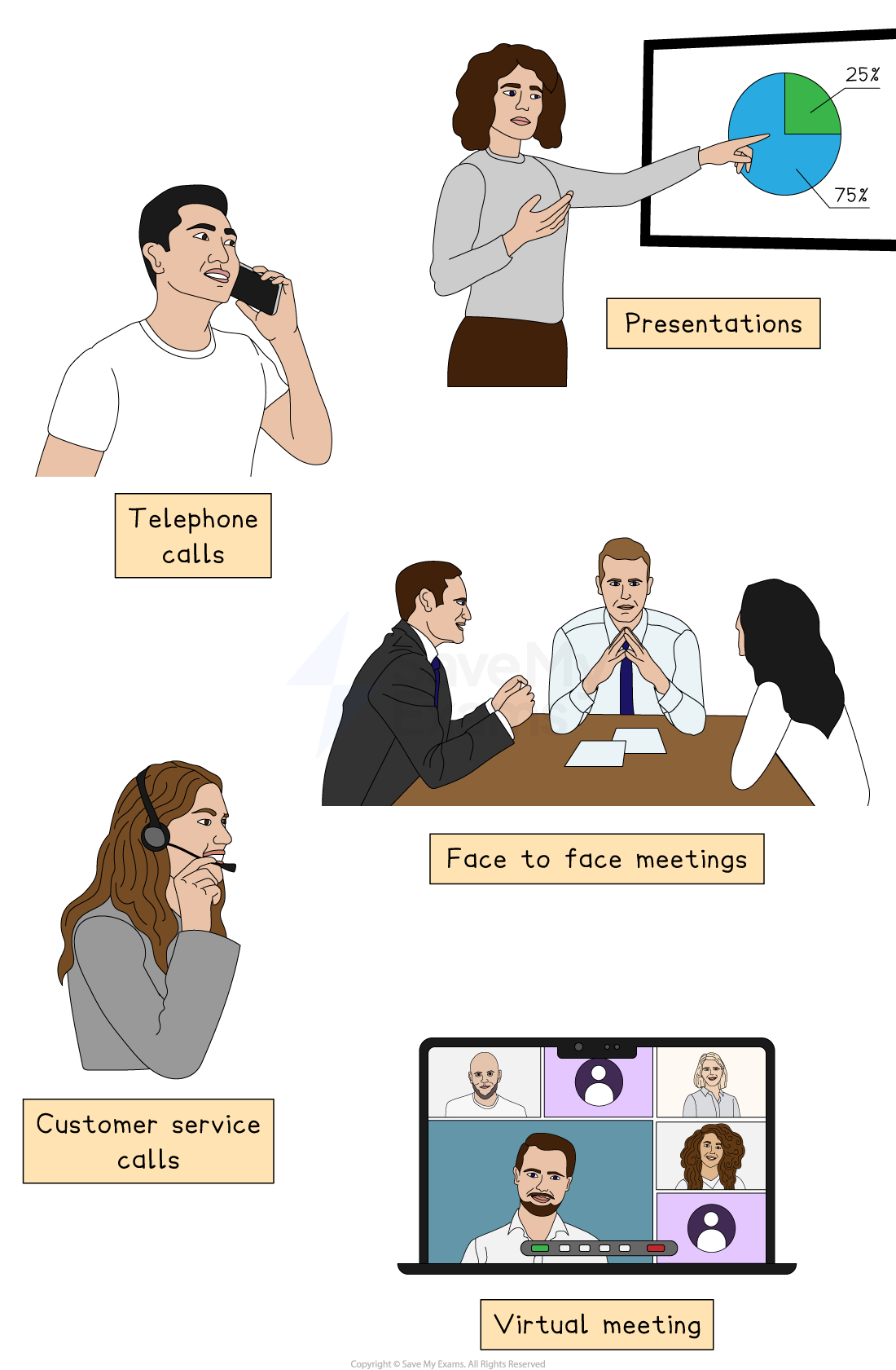Methods of communication (Cambridge (CIE) A Level Business): Revision Note
Exam code: 9609
Spoken communication
Spoken communication is the process of sharing information using the voice
It includes both formal and informal conversations and can happen face-to-face or through devices such as phones or video calls
It is often supported by body language, tone, and gestures, which help convey meaning
Examples of spoken communication in a business

Team meetings
Employees and managers discuss progress or upcoming projects
Telephone calls
Used to speak with customers, suppliers or colleagues
Presentations
A manager explains a new strategy to staff, often using software to share images, graphs and illustrations
Video conferences
Staff from different locations join a virtual meeting
Informal chats
Quick updates or feedback shared between co-workers during the working day
Customer service calls
Staff answering customer questions or solving problems
Strengths and weaknesses of spoken communication
Strengths | Weaknesses |
|---|---|
|
|
|
|
|
|
|
|
|
|
Written communication
Written communication is the sharing of information through written words, either on paper or digitally
It includes anything that can be read, such as emails, reports, letters, notices, or messages sent through digital apps
Written communication is often used when the message needs to be clear, permanent, or shared with several people
Examples of written communication
Emails
May be used for daily updates, requests or instructions between employees and managers
Business reports
These are usually formal documents outlining results, plans or research
Notices and memos
These can be used for internal announcements about meetings, policy changes or deadlines
Agendas and minutes of meetings
These record what will be or has been discussed in face-to-face or virtual meetings
Letters
These may be used for formal communication with external stakeholders such as customers, suppliers or job applicants
Contracts and agreements
These are legal documents confirming terms and conditions
Strengths and weaknesses of written communication
Strengths | Weaknesses |
|---|---|
|
|
|
|
|
|
|
|
|
|
Electronic communication
Electronic communication is the use of digital technology to send and receive messages
It includes written, spoken, or visual communication shared using electronic devices such as computers, smartphones or tablets
It allows quick and efficient contact within and outside the business, across any location or time zone
Examples of electronic communication
Emails:
Fast written messages that can be sent to individuals or groups
Video calls (e.g. Zoom, Microsoft Teams)
Real-time spoken and visual meetings
Instant messaging apps (e.g. Slack, WhatsApp)
Quick, informal messages between staff
Company websites
These are used to provide information to customers, investors and the general public
Social media (e.g. LinkedIn, Instagram)
This can be used to promote the business and interact with external audiences
Internal platforms
These include intranets that can be used to share updates, documents and announcements with employees
Strengths and weaknesses of electronic communication
Strengths | Weaknesses |
|---|---|
|
|
|
|
|
|
|
|
|
|
Visual communication
Visual communication is the use of images, symbols, charts or other visual elements to convey information
It helps to simplify complex ideas and make messages easier to understand and remember
Visuals are often used alongside spoken or written communication to strengthen the message
Examples of visual communication
Graphs, charts and infographics
These are often used in reports or presentations to show trends, sales data or performance
Logos and branding
These provide a visual identity of the business that creates instant recognition
Training videos or animations
These can help employees understand how to use equipment or follow procedures
Presentations (e.g. PowerPoint)
Software used in meetings or pitches to illustrate key points
Signs and symbols
These can include health and safety signs, arrows or labels around the workplace, providing instructions or information
Strengths and weaknesses of visual communication
Strengths | Weaknesses |
|---|---|
|
|
|
|
|
|
|
|

Unlock more, it's free!
Did this page help you?